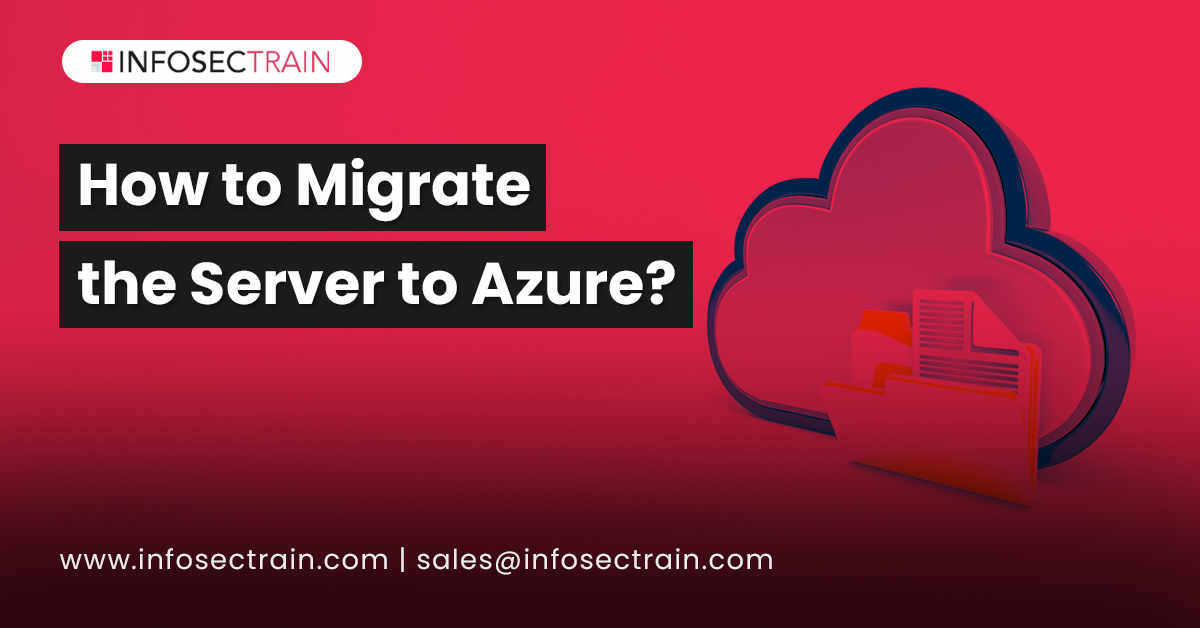How to Migrate the Server to Azure?
We can use Azure Migrate to migrate a server to Azure. Azure migrate is a service administered by Azure to render a centralized hub to appraise and migrate on-premises servers, infrastructures, applications, and data to Azure Cloud. It is a one-stop solution to not only just assess the infrastructure that we want to send to the Azure Cloud but also do the final migration part of it.

Why we need Azure Migrate?
We need Azure Migrate because:
- Unified Migration Platform: It is a single platform to monitor and run the migration to Azure Cloud.
- Range of Tools: It offers a wide range of tools for monitoring and migration.
- Assessment and Migration: Servers, Databases, Web Applications, Virtual Desktops, and Data can be assessed and migrated using a hub.
Azure Migrate Tools
Azure Migrate hub has some integrated tools. These tools are used to migrate servers, databases, web apps, virtual desktops, and data. This helps in easing the migration process. The tools are:
- Server Assessment: It is a very basic tool that serves in assessing the on-premises VMware, Hyper-VMs, and physical servers for migration to the cloud.
- Server Migration: It focuses on the actual migration of VMware VMs, Hyper-VMs, and physical servers, etc., to Azure.
- Database Migration Assistant: It helps in pinpointing the potential blocking issues for migration.
- Database Migration Service: It is used to migrate on-premises Databases to Azure VMs, which incorporates running SQL, Azure SQL Database, and Azure SQL managed instances.
- Movere: It helps in assessing the servers. It simplifies the entire assessment process.
- Web App Migration Assistant: It assesses and migrates on-premises web applications to Azure.
Azure Data Box: The Azure Data Box devices support data migration in offline mode as they easily transfer data to Azure when networks are not a possibility. You can use this tool to move massive quantities of data to Azure when you are confined by time, network availability, or costs.
Tips for server migration
With the world moving to the cloud, there are several small and larger businesses that are migrating their servers to Cloud. There are some things that you need to consider while migrating your servers to Azure, like:
- Plan your target: Before getting started, you need to understand your entire model first and plan what it should look like after the migration. You must have a rough figure in mind. It’s very effortless to fabricate things in the Cloud nowadays. Furthermore, it’s getting progressively simple to migrate applications, data, and servers to Azure. You can migrate an on-premises environment, other cloud platforms, or even your Hyper-V or VMware lab in your garage.You must start by migrating small workloads. This will construct your certainty and processes before migrating large workloads. It’s easy to begin little because there are countless tools to assist you in migration. This way, you’ll have several workloads migrated to Azure, even before you know it.
Set aside some effort to accept what the environment needs to resemble later on. You can adopt the Azure Policy to implement standards. You can also set up a hub-and-spoke virtual network with a unified firewall. Arrange custom RBAC roles to help your individual security access prerequisites.
- Ensure considering the dependencies: The next thing you need to do after planning and configuring the environment is you need to keep a check for the server interdependency. At the point when you’re migrating servers to Azure, server interdependencies are important and must be taken into consideration. It’s very fortunate that the Azure Migrate Assessment tool encourages you to identify them. With the Dependency Analysis trait, we can acquire visual information about processes and connections running inside your current environment.
Sometimes, small workloads may not be standalone solutions. They may have dependencies on another server that we are unaware of. Once the Azure Migrate Assessment tool identifies this dependency, we will have to migrate these servers together in a group.
- Evaluate the pricing: The cost of migration of the server is very significant to the Finance department of any organization. Using the Server Assessment tool, we can easily determine the migration cost. Once you created the server groups based on the interdependencies of the server, you need to identify the possibility of migration, which can also be determined by the Server Assessment tool.
First and foremost, the readiness assessment will figure out if the machines are suitable that we need to migrate to Azure. This will help distinguish whether there are any issues, for example, unsupported operating systems, disk stores that are excessively enormous, or network interface limits.
Also, we can utilize exceptional traits of the Assessment tool to anticipate the expenses of running these machines inside Azure. This will consider a scope of circumstances, for example, the pricing model you use and if you have hybrid licensing. You can screen your machines for days using the Performance-Based sizing and get a high-certainty recommendation for the VM family and resources (cores, RAM, storage) that you will require.
- Finalize the Migration Project: You have planned the target, grouped servers based on their interdependencies, and evaluated the cost. You can now go ahead and finalize the migration of servers. You can enable replication of your machines to Azure, perform test fail-overs, and then migrate the machine once your testing is entirely finished by using the Azure Migrate: Server Migration tool.
So, there’s no denying that the Azure Migrate service is inconceivably incredible in assisting your successful migration to Azure, yet we shouldn’t build our projects exclusively around the tool. For complex migrations, you’ll accomplish the best outcomes by beginning with migration planning first and then taking a look at how the Azure Migrate tool can assist you with accomplishing your objectives and not the other way around.









 1800-843-7890 (India)
1800-843-7890 (India)